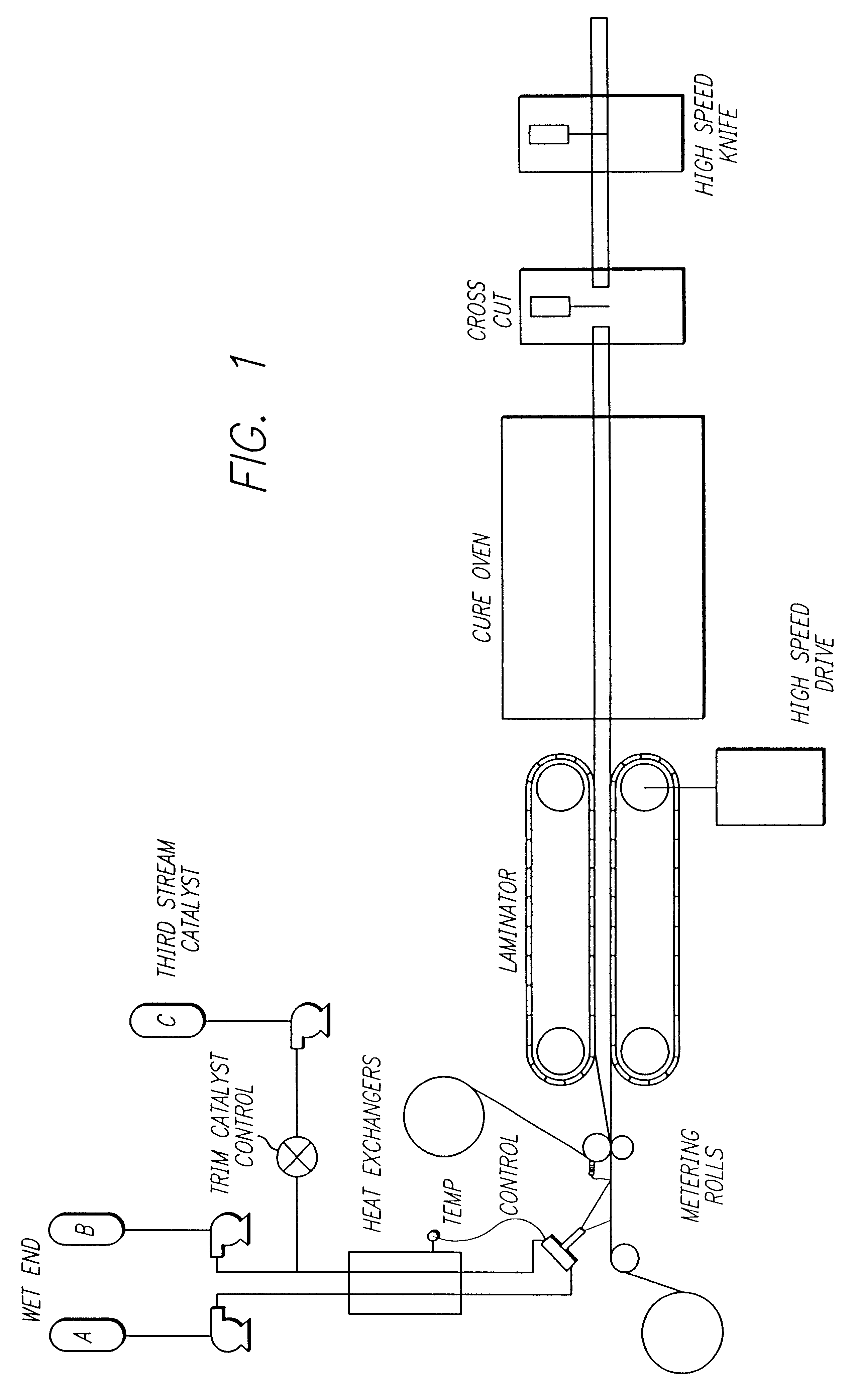Process for manufacturing rigid polyisocyanurate foam products
a technology of polyisocyanurate foam and polyisocyanurate, which is applied in the direction of transportation and packaging, synthetic resin layered products, chemistry apparatuses and processes, etc., can solve the problems of poor foam cell geometry, excessive densification of foam layers in contact with faces, and deterioration of physical, thermal and flammability properties
- Summary
- Abstract
- Description
- Claims
- Application Information
AI Technical Summary
Problems solved by technology
Method used
Image
Examples
Embodiment Construction
The following example describes application of the present invention, including the metering roll embodiment:
A chemical premix (Component B) was prepared in the batch tank to the following formulation:
The catalyst added to Component B was half of the required quantity. The remaining catalyst was added as a separate component or "trim" component.
A catalyst blend (Component C or "trim component") was prepared to the following formulation and placed in the Component C supply tank:
Hexcem 977 0.62 pbw
Dabco TMR-21.25
Component A is Rubinate 1850 isocyanate as received.
Components A and B were pumped in metered quantities (ratio of A:B maintained at 1.23:1) at pressures of about 2000 psi to a high pressure impingement foam mixhead. Component C was metered at high pressure (about 2500 psi) and injected into the Component B stream immediately upstream of the mixhead. Level was adjusted to achieve desired reactivity.
The foam forming mixture was deposited onto the bottom facing sheet immediately...
PUM
| Property | Measurement | Unit |
|---|---|---|
| density | aaaaa | aaaaa |
| density | aaaaa | aaaaa |
| thickness | aaaaa | aaaaa |
Abstract
Description
Claims
Application Information
 Login to View More
Login to View More - R&D
- Intellectual Property
- Life Sciences
- Materials
- Tech Scout
- Unparalleled Data Quality
- Higher Quality Content
- 60% Fewer Hallucinations
Browse by: Latest US Patents, China's latest patents, Technical Efficacy Thesaurus, Application Domain, Technology Topic, Popular Technical Reports.
© 2025 PatSnap. All rights reserved.Legal|Privacy policy|Modern Slavery Act Transparency Statement|Sitemap|About US| Contact US: help@patsnap.com

